Today on Geerling Engineering, my Dad and I toured the tower site for WSDZ-AM, located in Belleville, IL. It's a 20kW AM radio station broadcasting with an array of eight individual towers:
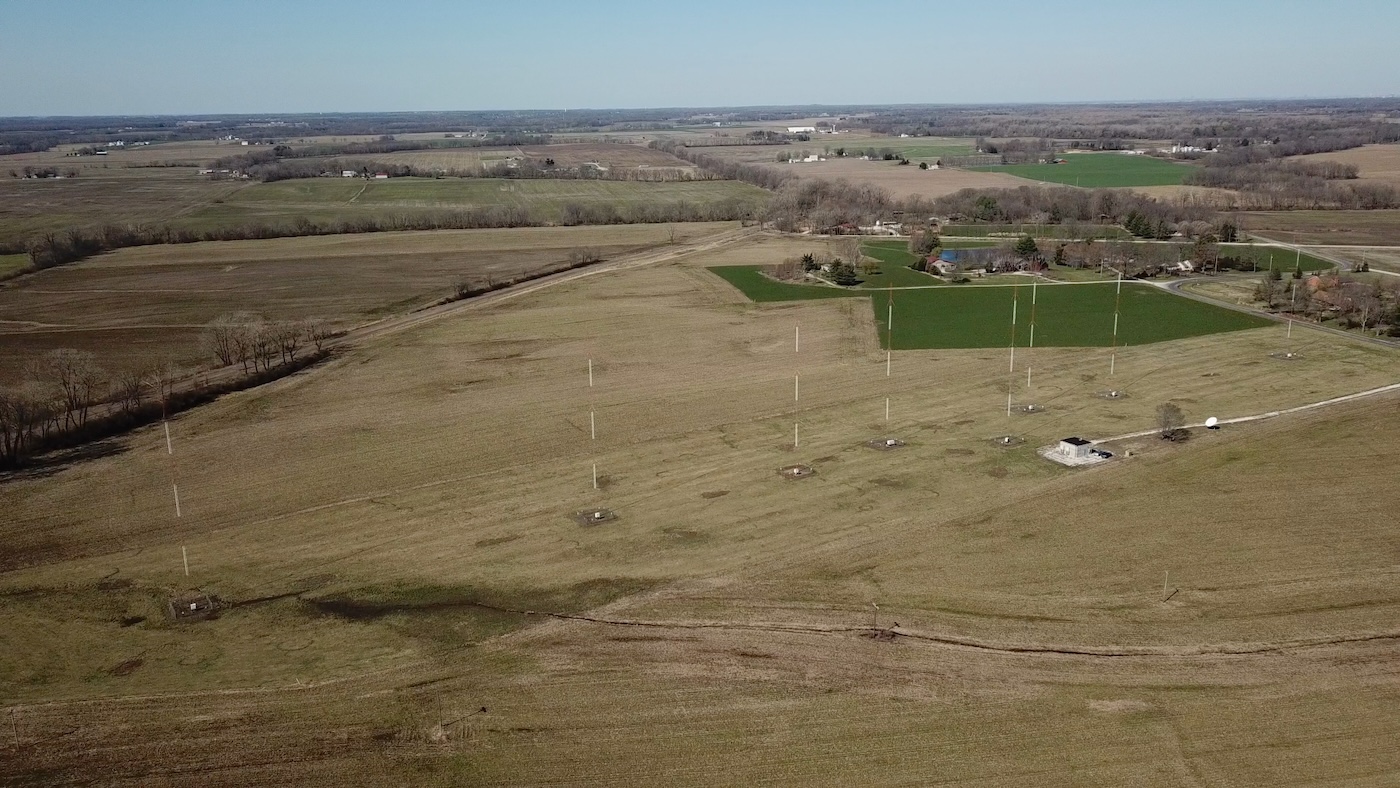
How does one get a single coherent signal out of an eight-tower array? Enter the phasor:
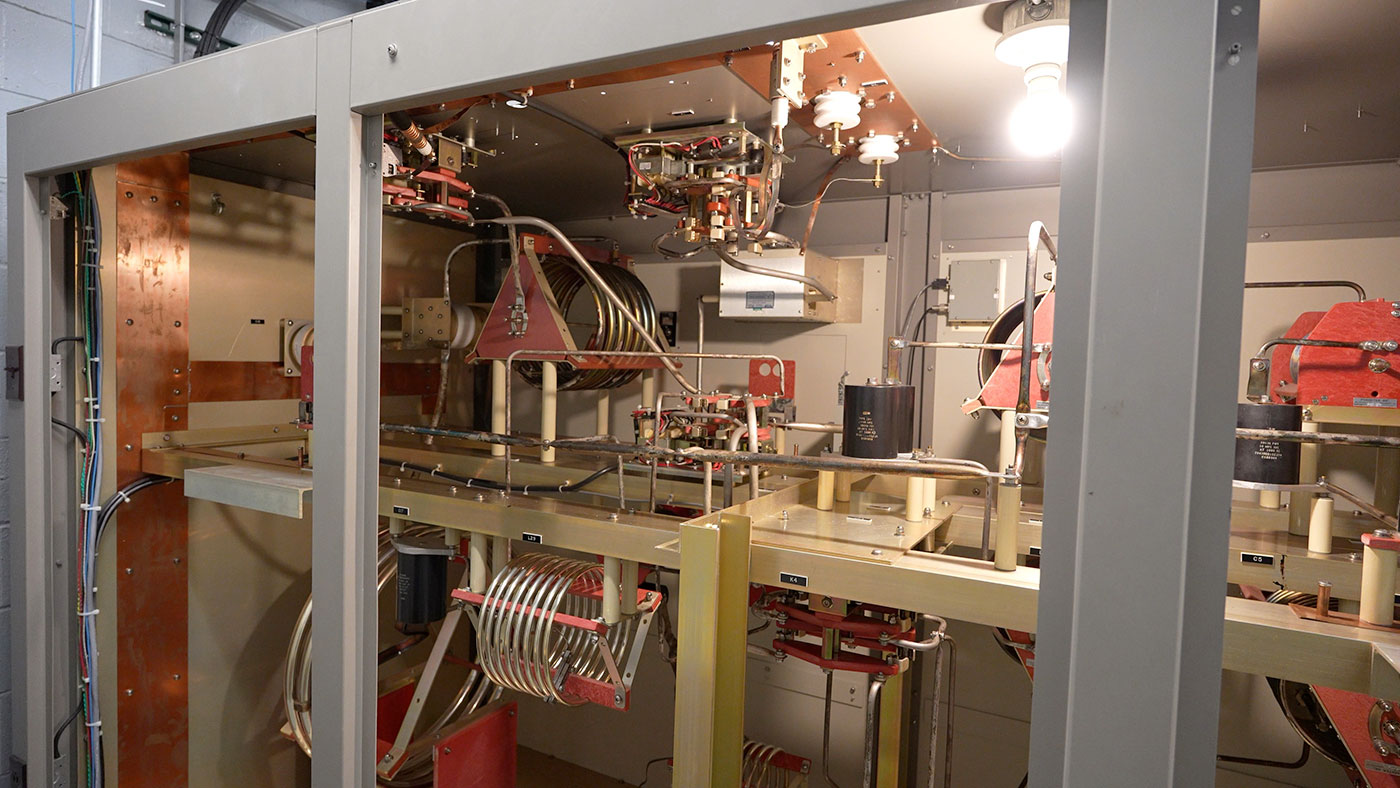
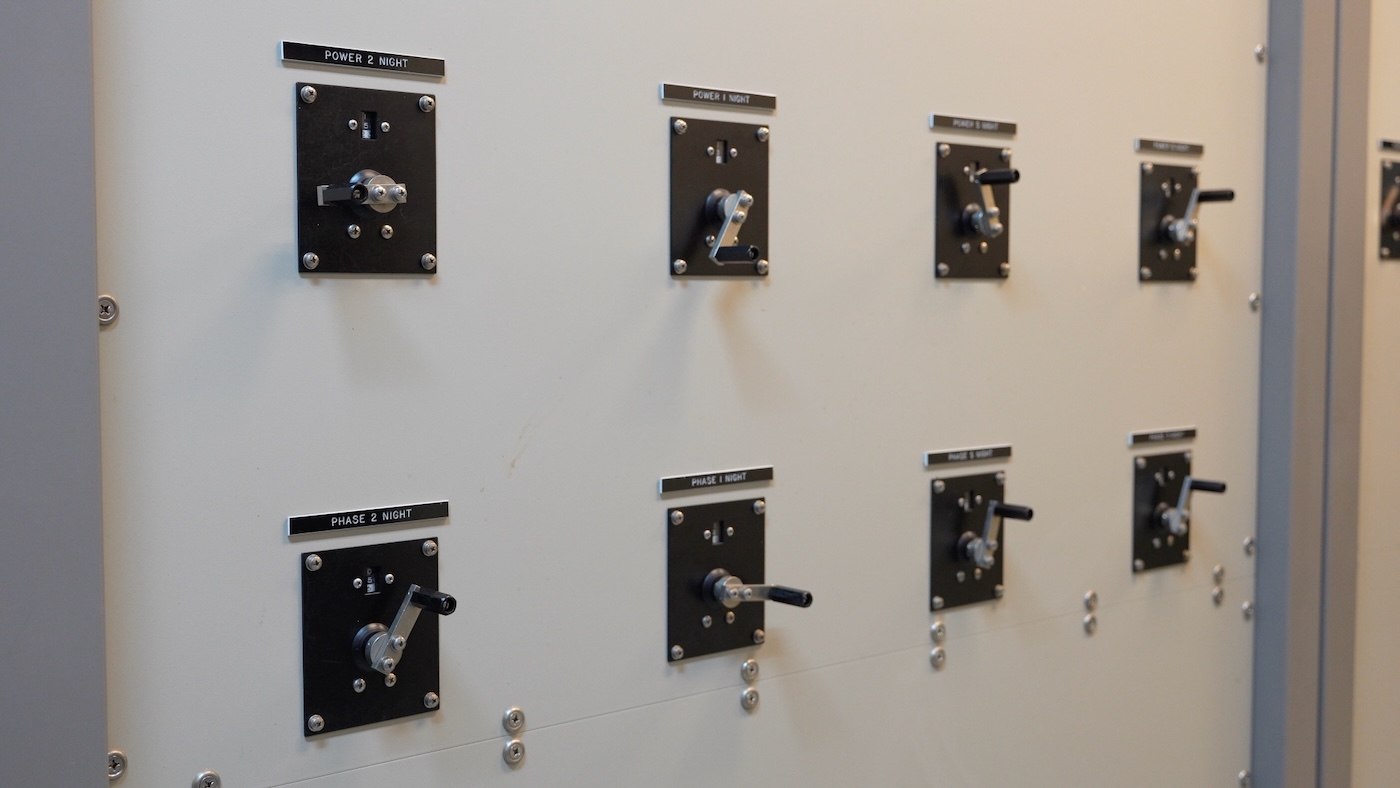
That's phasor with an o, not phaser with an e, so Trekkies need not fret about a misspelling.
The engineer at the station noticed our other tower tours, and was a friend of my Dad's, so he suggested we come see this site. It has one of the more elaborate AM broadcast phasor setups in the area.
Behind the unassuming front panel with all the cranks, there's a series of very beefy variable inductors and vacuum capacitors, where you crank them around to change the phase, power, and reactance of each of the individual towers—in this case, 5 in a day pattern, and 5 in a night pattern.
The inside looks like something out of Frankenstein's lab:
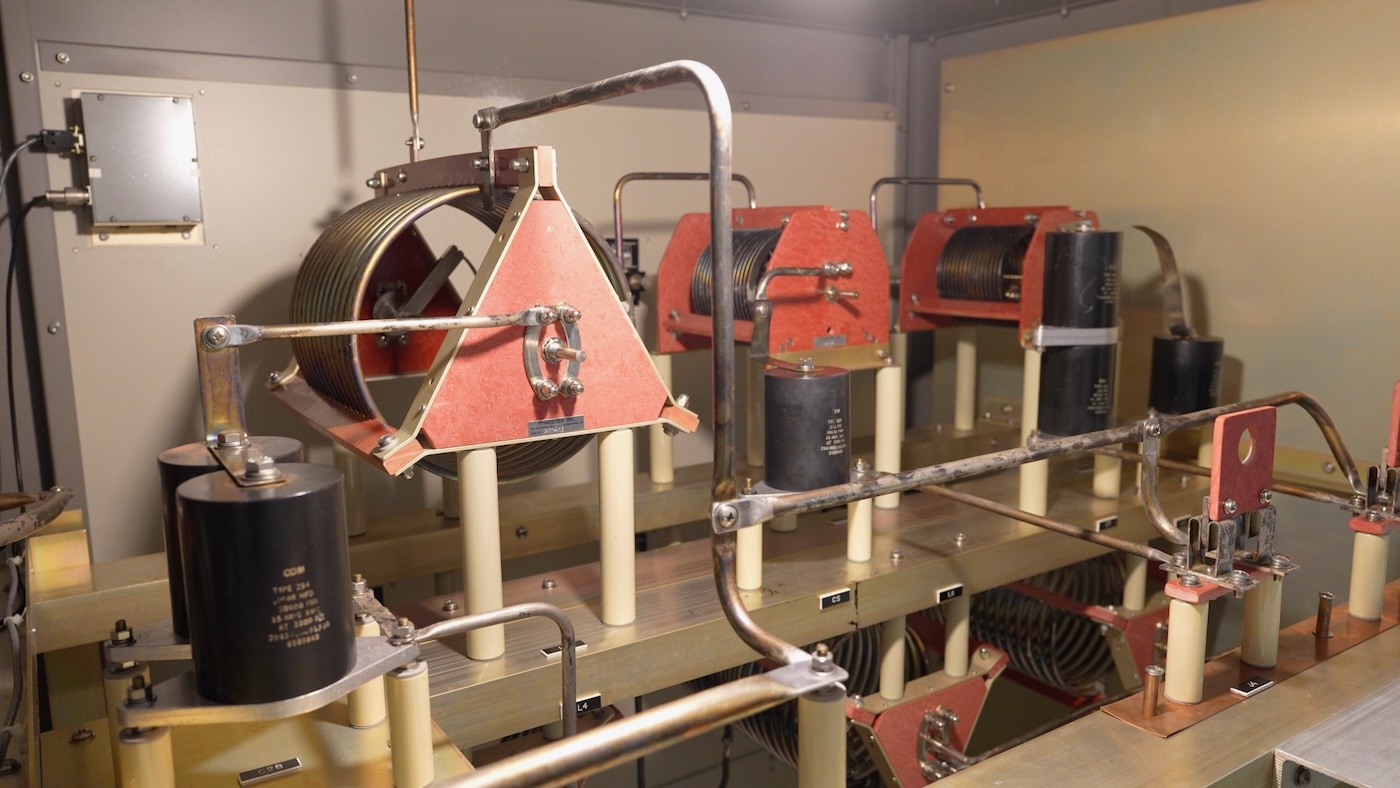
I'm told by the engineer that when there are issues besides a blown capacitor or a relay gone bad (they tend to do that sometimes, with 20 kW of power flowing through them 24x7), the wizards at Phasetek have him call them up to figure out what to do. The phasor itself is only half the tuning equation—in addition to all of it's knobs and relays, there are ATUs, or Antenna Tuning Units, at the base of each tower. And these are also full of massive inductors and capacitors, matching the towers to the phasor and transmitter:
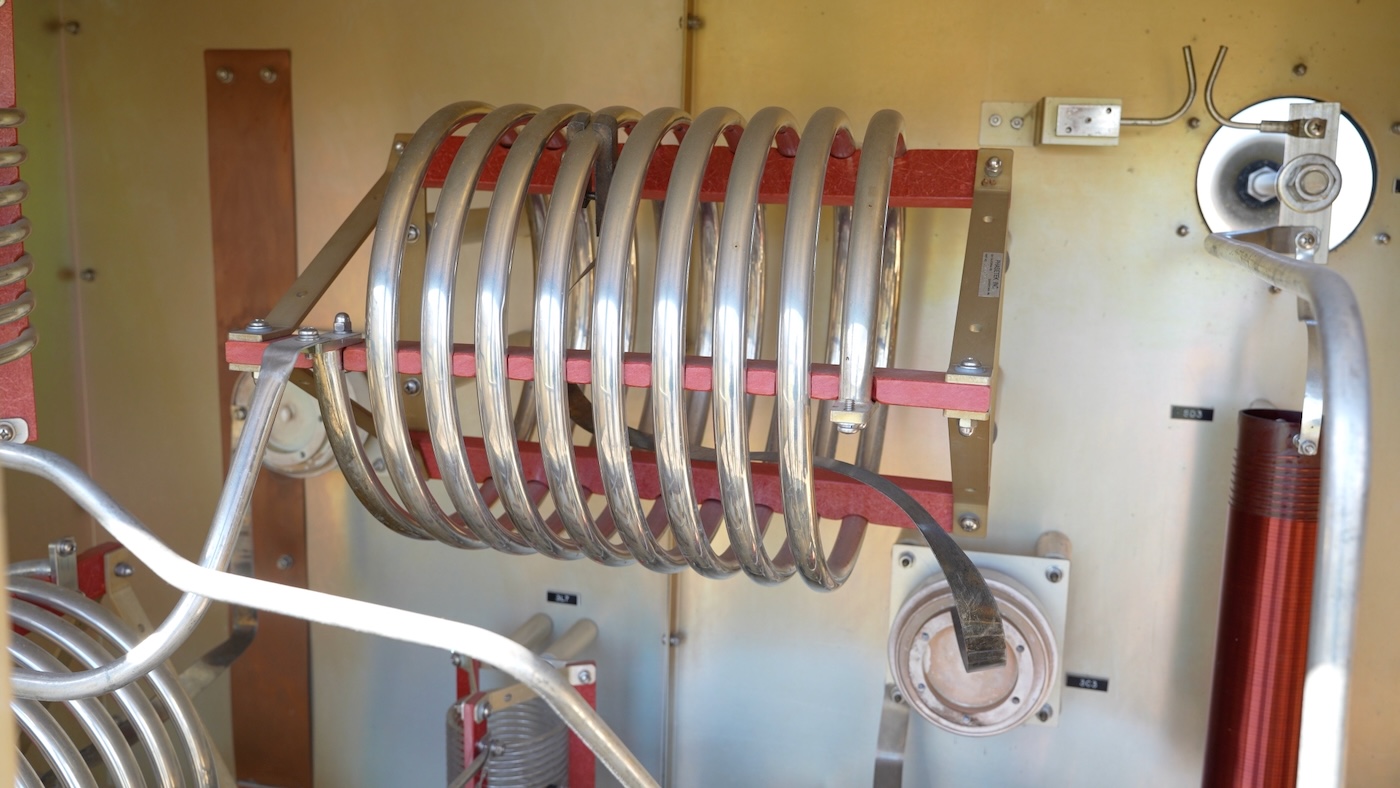
We have an entire video about the tower site, embedded below:
In the video, we get into all the equipment on the site, and talk on a high level about tower array design, transmitter room layout, grounding for the building and towers, and more—but we didn't dive too deep into the actual physics of the phasor.
For that, I found this great little intro with some nice 1950's illustrations: Antenna Theory - Directivity. The idea of a 'phased array' of antennas was introduced in 1905 by Karl Ferdinand Braun, and the phasor installed in the WSDZ-AM transmitter site builds on that theory, in a relatively simple way.
Modern beam-forming antennas are used for much more exotic applications, from the flat Starlink satellite dishes to 3D radar systems deployed by the military.
I would highly recommend watching the video if you want to see more about the application of this tech in AM radio, especially since we demonstrate one of the interesting quirks of running an AM station with a day/night pattern. To control the signal's directionality and reach at night—when the ionosphere extends the reach of AM signals much further—there's a series of 16+ massive RF relays all remotely operated and automated by switchers like this:
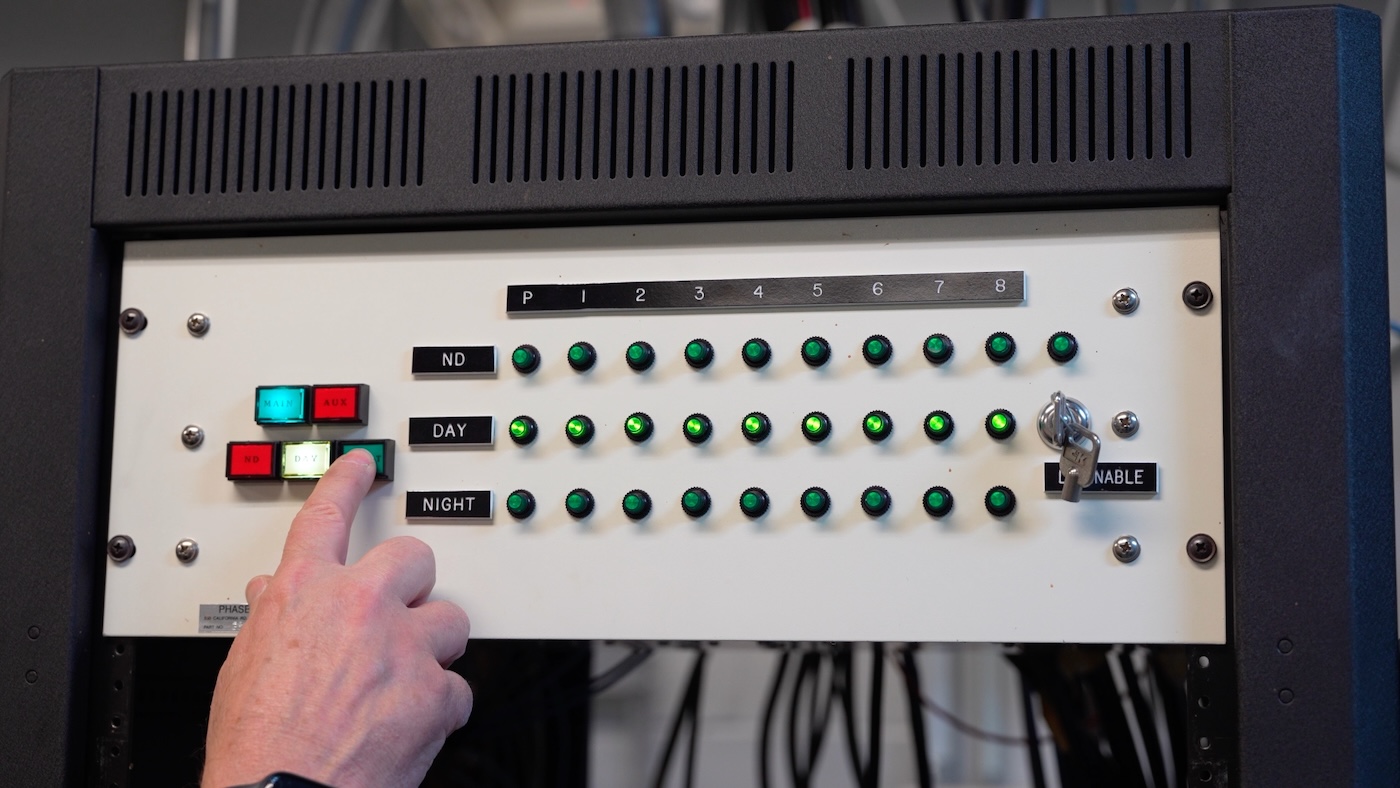
They make an impressive ka-chunk ka-chunk, especially in tandem with the transmitter's brief power-down-power-up cycle!
But even when you split up the 20 kW among 5 towers, it's never a good idea to touch an AM tower.